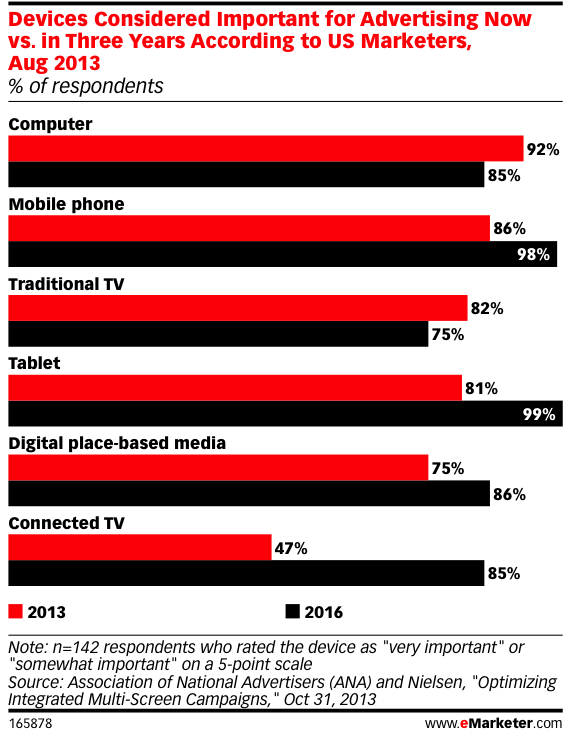The Flight Path: The New Cross-Device Customer Purchase Journey
Father’s Day has just passed, and that means many consumers were scrambling last week to ensure their father’s gift arrived in time for the holiday. While many may have begun their path to purchase on a desktop during work, others may have started on a mobile device during their commute home, ultimately completing their purchase […]
 Father’s Day has just passed, and that means many consumers were scrambling last week to ensure their father’s gift arrived in time for the holiday.
Father’s Day has just passed, and that means many consumers were scrambling last week to ensure their father’s gift arrived in time for the holiday.
While many may have begun their path to purchase on a desktop during work, others may have started on a mobile device during their commute home, ultimately completing their purchase journey on another device.
Marketers that were aiming to target consumers during their path-to-purchase journey were most successful if they adapted their messaging to fit into any device context — from mobile to desktop, apps to display ads.
As reported in DM News, recent Forrester research unveiled at the Tapad Unify conference in April said that consumers are becoming so device agnostic that 51% of their path to purchase begins on whatever device is handy at the time the thought of purchasing something entered their mind.
The variety of devices available today creates a multitude of challenges for marketers, so those that stay the most savvy about their marketing delivery will succeed in this cross-device world.
Relevance, points of engagement and creative delivery are all key elements to be considered when aiming to drive conversions across devices for marketing in the digital world. Channels simply cannot be measured equally, and the purchase funnel can no longer be considered a linear path — it’s now like a flight map with many potential routes and destinations.

Here are a few things to keep in mind as you work to conquer the cross-device world and make your marketing a more seamless experience for consumers.
Engagement Levels Change Based On Device In Use
 In the example of the Father’s Day gift, engagement could have happened on multiple devices depending on timing and accessibility of the device; it could even have happened concurrently across multiple devices.
In the example of the Father’s Day gift, engagement could have happened on multiple devices depending on timing and accessibility of the device; it could even have happened concurrently across multiple devices.
Users are doing more with various devices and will engage with the most user-friendly features and most-trusted devices.
Other examples lend to the point that users engage with smartphones when they are on the go and look for features like a store locator or click-to-call function to assist them. Connected consumers are also coming to expect spot-on personalization — no matter where they are.
The Forrester research revealed that 71% of consumers don’t take well to inconsistent cross-channel messaging — and one in ten even went so far as to say that inconsistencies in the brand experience from device-to-device would make them stop interacting with a brand altogether.
Marketers must ensure that their advertising across devices is consistent to help push the consumer along the purchase path at various levels of engagement points.
The Multiplicity Of Devices Has Made The Purchase Cycle More Personal
Given the fact that the beginning and end of a purchase can happen across different devices, the purchase funnel is becoming more and more difficult to predict. Users are engaging with multiple devices during their exploration and discovery phase and are using the devices in closest proximity to them.
Consumers are first learning about and exploring brands in coffee lines, while waiting for a friend to arrive at dinner, or while working on other tasks. However, consumers are more likely to actually purchase via desktops.
Cross-Device Attribution Is Imperative For Market Planning
It’s important to see where credit is due outside of cookies; and mobile doesn’t track 100% of cookies. If you’re only measuring conversions across one device, you’ll miss out on the credit other device environments play in your consumer’s path to purchase.
Many attribution measurement companies have already adopted cross-device partners or solutions to solve this, and it’s important that marketers do the same.
A consumer’s world now mirrors a flight map — interweaving across the web on TVs, desktops, laptops, smartphones and tablets.

Although there are challenges and complexities with the number of devices consumers are using today, there are many solutions that marketers can build into their overall branding strategy while still incorporating attribution measurement.
These include solutions that use first-party data (if scale is not a concern), device matching, or measuring mobile-specific engagements such as click-to call, click-to-locate and click-to engage.
As a result, consistent brand messaging is more important than ever before. The Forrester research revealed that there are nearly one billion smartphones and nearly two-thirds of consumers owning three or more connected devices. Therefore, marketers must provide a unified user experience or they risk losing their customers to brands that do.
Contributing authors are invited to create content for MarTech and are chosen for their expertise and contribution to the search community. Our contributors work under the oversight of the editorial staff and contributions are checked for quality and relevance to our readers. MarTech is owned by Semrush. Contributor was not asked to make any direct or indirect mentions of Semrush. The opinions they express are their own.
Related stories